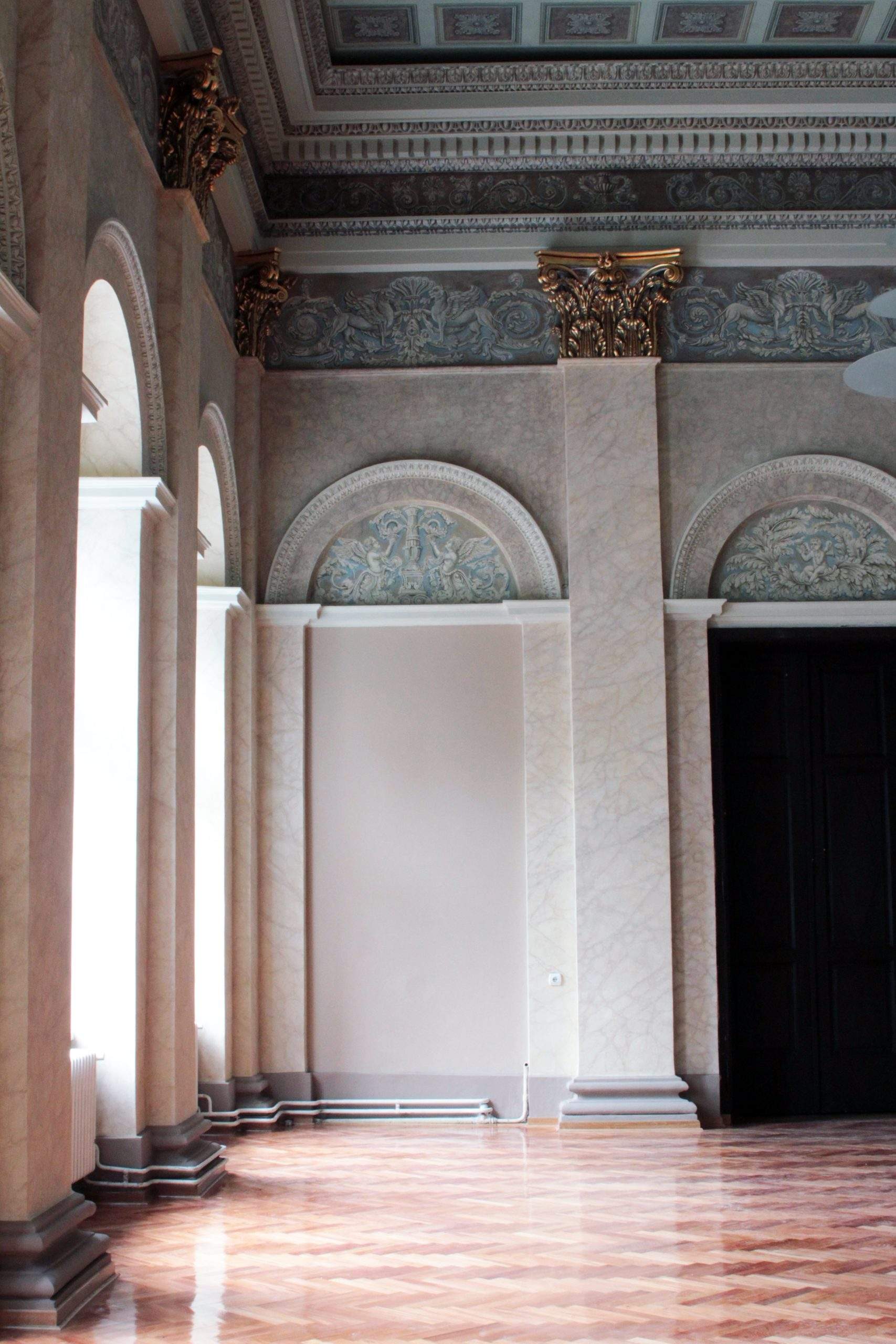National Museum Pančevo
The building that now houses the National Museum Pančevo was erected during 1838 under the Habsburg Monarchy and served as the Magistrate until 1965, when it transformed into a museum complex. The initiator of the museum’s establishment was Dr. Branislav Jankulov in 1923, who used his private collection for its founding. The characteristic neoclassical style of its architecture indicates its multifunctional nature, with sections dedicated to archaeology, history, ethnology, art history, along with accompanying photographic and preparatory laboratories.
Julije Sajdl, a painter from Novi Sad, painted and decorated the ceremonial hall of this two-story complex. Unfortunately, after World War II, the hall underwent multiple alterations and repaintings, significantly diminishing its historical and aesthetic value. Before its transformation into a museum, this building served as the city administration, library, archive, municipal building, and prison.
The museum boasts a large collection of significant artworks, including Paja Jovanović’s “The Migration of the Serbs,” a vast collection of paintings and art objects, as well as an impressive archaeological and ethnological collection. The building was placed under state protection in 1948, and in 1991, it was declared a cultural monument of great importance.
Our team carried out conservation and restoration works in two phases, first repairing and reconstructing the ceiling, and then the ceremonial hall, to preserve its original character and enable its adaptability for various events such as ceremonies, receptions, and cultural manifestations.
Year:
2014-2015Location:
Pančevo, SERBIALocation:
Pančevo, SERBIAConstruction Period:
2014-2015Client:
National Museum in Pančevo


